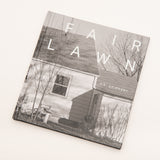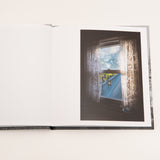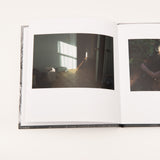In Fair Lawn, everything unfolds from the cover photograph, taken 20 years earlier—an image which not only informs the book’s physical structure and sequence but also unwittingly began a multi-year navigation through a deeply personal space at a time of unexpected transformation. Returning regularly to the home owned by his family for five decades—in which his mother had returned to be with his aging grandmother—Opirhory distills years of images into an intuitive map of empty rooms populated by ineffable perceptions that lurk just beyond the literal.
Embracing a methodology that prioritizes temporal observation and engagement to conjure a dream-logic freed from chronology, Opirhory positions the present moment in conversation with a shifting understanding about the past. Fair Lawn’s sustained communion with its surroundings invites references from cinema as much as still photography. As in the films of Andrei Tarkovsky, obscured human forms situated within vivid physical spaces assume in their identity-blurring abstraction; as with the 16mm films of Nathaniel Dorsky, Opirhory’s physical relationship to the world manifest as the camera’s relationship to the image.
Embracing a methodology that prioritizes temporal observation and engagement to conjure a dream-logic freed from chronology, Opirhory positions the present moment in conversation with a shifting understanding about the past. Fair Lawn’s sustained communion with its surroundings invites references from cinema as much as still photography. As in the films of Andrei Tarkovsky, obscured human forms situated within vivid physical spaces assume in their identity-blurring abstraction; as with the 16mm films of Nathaniel Dorsky, Opirhory’s physical relationship to the world manifest as the camera’s relationship to the image.










